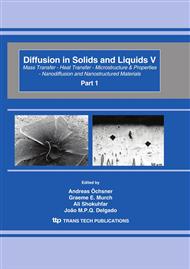p.537
p.543
p.549
p.555
p.561
p.567
p.573
p.579
p.584
Efficiency Improvement of Organic Light Emitting Diodes with Co-Deposited Hole Blocking Layer
Abstract:
There are several kinds of methods in improving the efficiency of organic light emitting diodes (OLEDs). In this work, we used a co-deposited hole blocking layer to improve the efficiency of OLEDs. The structure of the component is: ITO/ MTDATA(15 nm) /NPB(40 nm) /BCP(10 nm) /BCP: Alq(15 nm) /LiF(0.7 nm)/ Al(180 nm). We changed the mixing rate of the BCP:Alq layer to be capable of hole blocking and electron transporting, and then improved the efficiency of OLEDs. Finally, we prepared white light OLED with doping Rubrene in NPB. When the concentration of the NPB: Rubrene layer was 2.0 wt.%, the device could emit the white light at 100 mA/cm2, and the luminance was above 2300 cd/m2, and the color coordinate was x = 0.36, y = 0.37.
Info:
Periodical:
Pages:
561-566
Citation:
Online since:
April 2010
Authors:
Price:
Сopyright:
© 2010 Trans Tech Publications Ltd. All Rights Reserved
Share:
Citation:


